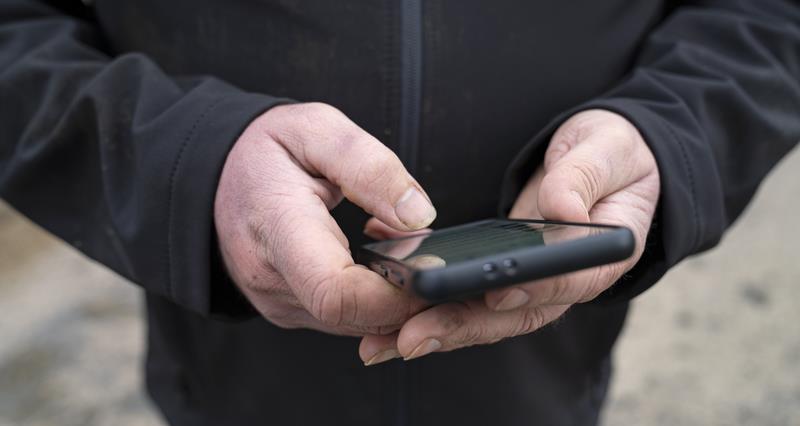These features might not be supported on all phones and some models may require a slightly different set up. Contact your network provider if you need assistance.
Remember that it is illegal to use your mobile when driving and offenders can be prosecuted.
Location sharing
What3Words
What3Words has divided the world into three-by-three-metre squares, which all have their own uniquely named three word code.
The system is used by over 80% of UK emergency services and allows you to share a precise location without the need of geographic co-ordinates.
Distribution Network Operators have also overlaid the maps of their infrastructure with the What3Words map, making it easier for them to pinpoint powerline strikes and isolate the line accordingly.
Remember
Discuss the best course of action with your family, friends, or employees.
Be clear that employees are not obliged to do so, but it’s in the interest of safety.
Visit the What3Words website or search ‘What3Words’ in your app store to make use of the tool.
You can share your exact location with other WhatsApp contacts, which may help in instances in lone working.
To share your location, tap the plus icon on the bottom left of a WhatsApp chat, followed by ‘Location’. You will then have the option to share either your current location, or your live location that will be shared for the time period that you choose.
Apps that assist with lone working
There are a number of mobile apps that assist with lone working. These apps can help businesses keep in touch with their employees and help to provide vital assistance, should the need arise.
Lone working apps are customisable depending on their need. For example, many allow you to send alerts to users to check in during certain time intervals, or will notify if a user is in difficult if their GPS position has not changed over a given time period.
Many lone working apps require a membership fee or similar. Examples of these include: Stay Safe, Get Home Safe, LoneAlert and Connecteam.
Emergency SOS
This function alerts pre-selected contacts that you are in an emergency situation. Read on underneath the section on your mobile device to learn how to activate this feature.
iPhone
iPhones will give the option to dial 999 and alert emergency contacts once the call has ended. To activate this, press and hold one of the volume buttons along with the side button on the right hand side of the phone.
If you have an iPhone 7 or earlier, this feature can be activated by rapidly pressing the side (or top) button five times.
Your phone will also send a text message to your emergency contacts with your current location. You can set up emergency contacts on your iPhone under the Health app.
Remember
You should always call 999 when it is an emergency, such as when there is danger to life or when a crime is in progress.
For non-emergencies, consider using the NHS 111 service or contacting the police's non emergency number 101.
Android
Mobile phones that use the Android operating system, such as Samsung, Google Pixel, Huwaei, Motorola, Xiaomi or Nokia phones, also have an Emergency SOS feature.
To activate this, press the power button on your phone five times or more. You will then have the option to call the emergency services.
You can also create other emergency actions, such as share your location with emergency contacts, who will receive this information at the same time as the emergency services. Select ‘Safety and Emergency’ in your phone settings to set up your emergency contacts and set this feature up.
Contact 999 by text
If you are in an emergency and are unable to speak, have hearing or speech difficulties, it is possible to contact 999 by text message. You will need to register for this service beforehand by texting the word ‘register’ to 999.
In an emergency, text 999 with the name of the service you require and a brief description of the problem and location. The emergency service will then either reply asking for more information or tell you that help is on the way.
It will normally take about two minutes to get a reply. If you don’t get a reply within three minutes, try again or find other ways of getting help.
Store important medical information
You can use your mobile phone to store important medical information, such as your blood type, allergies or medications. Storing this information on your phone will allow medical professionals to access these details during potentially life saving situations.
iPhone
On an iPhone, open the ‘Health’ app. Tap on your profile button in the top right hand corner and tap ‘Medical ID’.
You can then enter any details you believe would be important, as well as an emergency contact. You can also select whether you would like this information to be viewed when your phone is locked, or whether it will be shared during an emergency call.
Android
On an Android device, go to ‘Settings’ and tap ‘Safety and Emergency’.
You can then either select to add your medical details, or add emergency contacts. You can also select how this information is shared.
